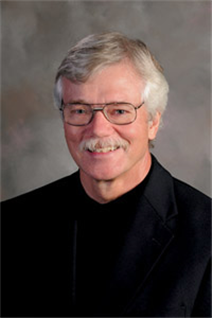
Softer skin, reduced fine lines, a youthful glow, clinically tested, dermatologist-approved: These promises are frequent messages in the world of cosmetics advertising. But a new study shows that the average consumer thinks they’re mostly bunk, and that’s a bad omen for the future of cosmetics brands’ ad practices.
The study, co-authored by Les Carlson, University of Nebraska-Lincoln professor of marketing, examined and categorized the messaging of nearly 300 beauty ads from seven high-profile magazines from April 2013. They then asked a panel of judges, selected to represent the average consumer, to place claims made in each advertisement into one of four classifications: outright lie, omission, vague or acceptable.
The results showed that fewer than one in five – 18 percent – of the claims made in the ads were deemed acceptable and that most scientific messaging was considered vague or as an outright lie.
“We were able to classify the types of claims being used into six categories, such as scientific claims and endorsements, and then helped pinpoint the types of claims that consumers felt were misleading or deceptive,” Carlson said.
Carlson worked on the study with his former doctoral student, Jie Fowler, an assistant professor at Valdosta State University, who was the study’s first author; and Timothy H. Reisenwitz, also of Valdosta State. The group compared the results to similar research he’s completed about the messaging of environmentally friendly products. Their results were published in the Journal of Global Fashion Marketing
“More advertisements within the environmental movement were deemed misleading or deceptive than acceptable, so I kind of felt we’d find that same outcome in a study based on cosmetics advertising, but it was surprising how few were deemed acceptable,” Carlson said.
Also notable, but not necessarily surprising, was how well endorsements fared compared to scientific statements.
“I think that’s based on trust, because the endorser must be considered credible,” Carlson said.
But there’s a downside to endorsements, too.
“I’m not sure if using celebrities is always effective,” Carlson said. “People are aware that they are being paid and may say anything, so does what they’re saying really hold any weight?”
Similar to findings in his past research on environmental messaging, Carlson said cosmetic advertisers need to avoid using broad claims and focus more on specificity.
“You can’t just say, ‘environmentally friendly,’” Carlson said. “The consumer wants to know how it’s environmentally friendly, so instead say, ‘It hasn’t been tested on animals.’”
If a claim about cosmetics is made that is scientific, consumers tend to hope to see some explanation of what it means. Or if the advertisement uses the term “award-winning,” it should also say what that award was, he said. If they don’t, they could end up hurting their brands, as consumers can quickly become defensive against a brand.
“The literature is clear that grade school kids, even by the sixth grade, have already developed a pretty healthy skepticism toward advertising, and as they encounter more and more ads, that fuels the skepticism,” Carlson said. “Using messaging that consumers deem as deceptive or misleading is not helping.”







